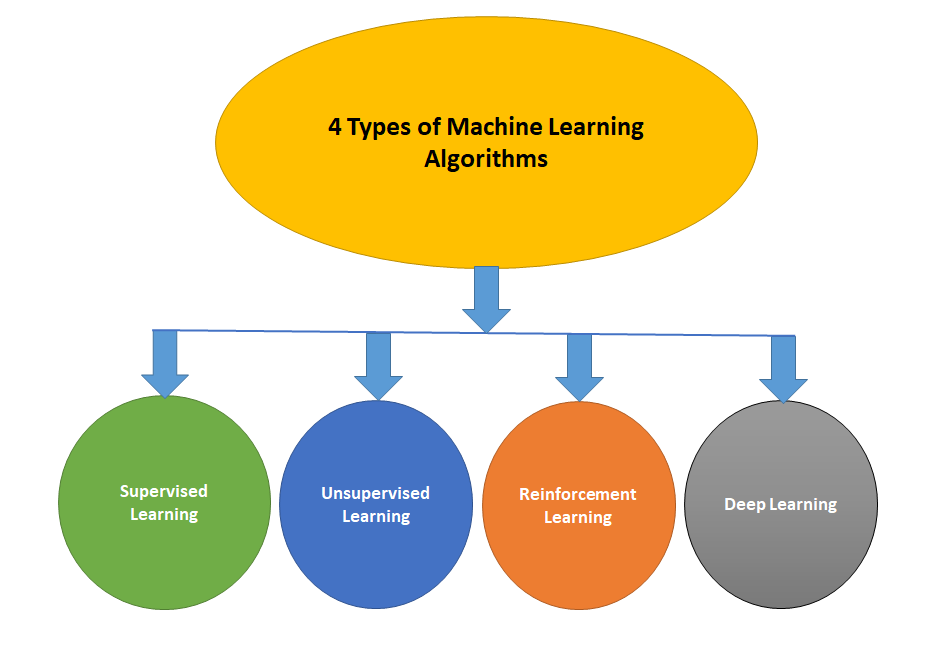Types of supervised Machine learning Algorithms

Supervised machine learning algorithms can be broadly categorized into two main types based on the nature of the prediction task: classification and regression. Here are some common types of supervised learning algorithms within each category:
-
Classification Algorithms:
-
Logistic Regression:
- Logistic regression is a linear classification algorithm used for binary classification tasks. It models the probability that a given input belongs to a particular class using the logistic function.
-
Support Vector Machines (SVM):
- SVM is a powerful algorithm used for both binary and multi-class classification tasks. It finds the optimal hyperplane that separates different classes in the feature space while maximizing the margin between them.
-
Decision Trees:
- Decision trees are versatile algorithms used for both classification and regression tasks. They partition the feature space into hierarchical decision nodes based on feature values, leading to interpretable decision rules.
-
Random Forest:
- Random Forest is an ensemble learning algorithm that builds multiple decision trees and combines their predictions through voting or averaging. It improves prediction accuracy and generalization by reducing overfitting.
-
Gradient Boosting Machines (GBM):
- GBM is another ensemble learning algorithm that builds a sequence of decision trees iteratively, with each tree correcting the errors of its predecessor. It achieves high accuracy by focusing on difficult-to-predict instances.
-
K-Nearest Neighbors (KNN):
- KNN is a simple yet effective algorithm that classifies a new data point based on the majority vote of its k nearest neighbors in the feature space. It does not require training and is often used for lazy learning.
-
Naive Bayes Classifiers:
- Naive Bayes classifiers are probabilistic algorithms based on Bayes' theorem and the assumption of feature independence. They are efficient and effective for text classification and spam filtering tasks.
-
Regression Algorithms:
-
Linear Regression:
- Linear regression is a basic regression algorithm used for modeling the relationship between input features and continuous output variables. It fits a linear equation to the data and predicts the target variable based on input features.
-
Ridge Regression:
- Ridge regression is a regularized version of linear regression that penalizes large coefficients to prevent overfitting. It adds a regularization term to the cost function, which controls the complexity of the model.
-
Lasso Regression:
- Lasso regression is another regularized regression algorithm that performs feature selection by enforcing sparsity in the coefficient vector. It adds an L1 regularization term to the cost function, leading to sparse solutions.
-
ElasticNet Regression:
- ElasticNet regression is a hybrid of Ridge and Lasso regression that combines both L1 and L2 regularization penalties. It balances between feature selection and coefficient shrinkage to improve prediction performance.
-
Decision Tree Regression:
- Decision tree regression is similar to decision tree classification but predicts continuous output variables instead of discrete class labels. It partitions the feature space into segments and predicts the average value within each segment.
-
Random Forest Regression:
- Random Forest regression applies the ensemble learning technique of Random Forest to regression tasks. It builds multiple decision trees and averages their predictions to improve accuracy and robustness.
-
Gradient Boosting Regression:
- Gradient Boosting regression is similar to Gradient Boosting Machines for classification but is used for regression tasks. It builds a sequence of regression trees iteratively to minimize the residual errors.
These are some of the most commonly used supervised learning algorithms, each with its strengths, weaknesses, and suitable applications. The choice of algorithm depends on factors such as the nature of the data, the complexity of the problem, the size of the dataset, and the desired prediction performance.
Thank you,